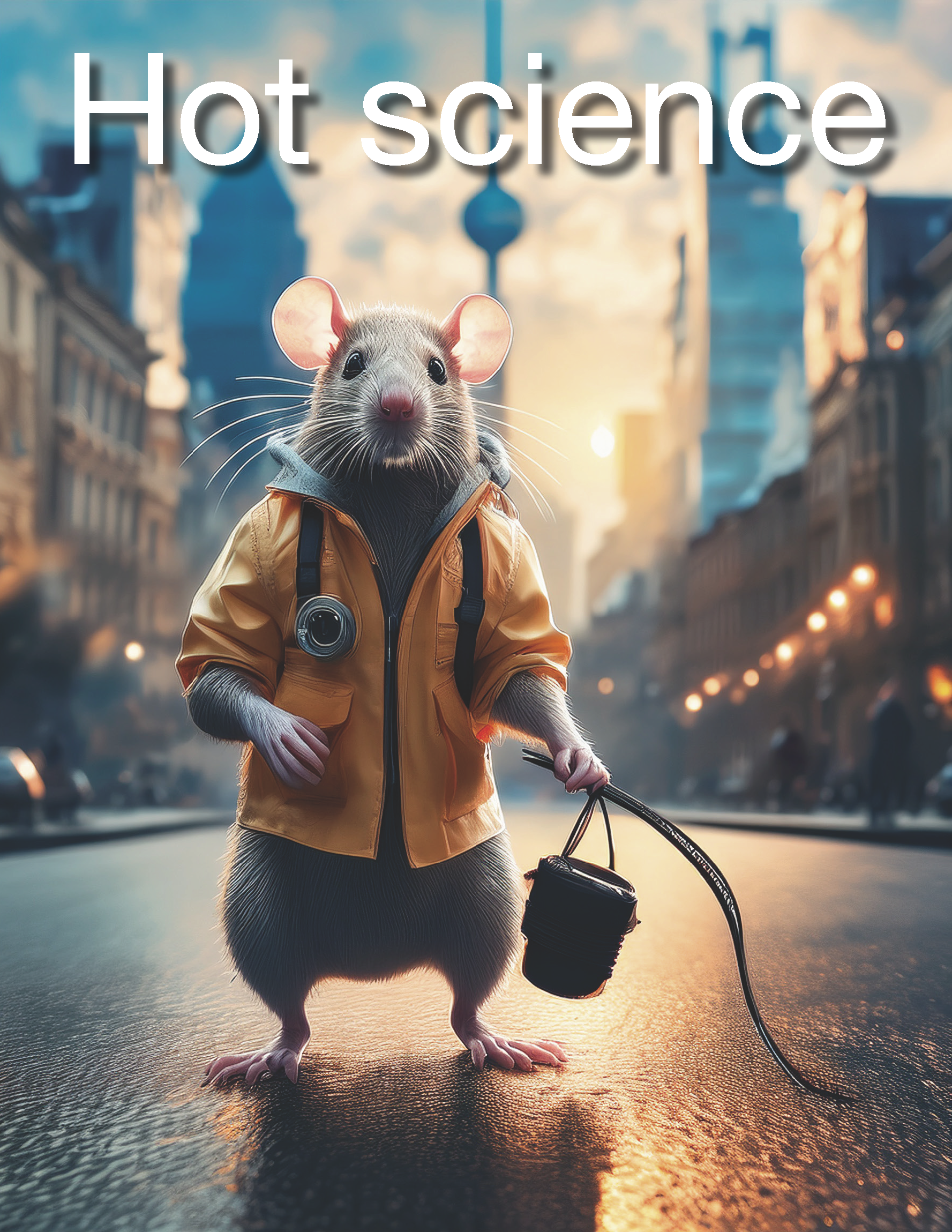Urban wildlife as biosensors for health?
Keywords:
Urban wildlife, Natural biosensors, One HealthAbstract
Did you know that some urban animals, such as rats, pose a public health risk? Researchers at the National Polytechnic Institute (IPN) utilize advanced technologies, such as genomic analyses and portable sensors, to facilitate the early detection of zoonotic diseases and environmental pollution. With these innovative methods, animals traditionally considered pests become valuable “natural biosensors” for monitoring well-being, the ecological well-being of humans, animals, and the environment. This integrative approach, known as “One Health,” promotes collaboration among scientists, authorities, and communities, offering concrete solutions to prevent disease and improve urban quality of life.
References
Patel, A., Jenkins, M., Rhoden, K., & Barnes, A. N. (2022). A Systematic Review of Zoonotic Enteric Parasites Carried by Flies, Cockroaches, and Dung Beetles. Pathogens, 11(1), 90. https://doi.org/10.3390/pathogens11010090
Won, S. (2016). Tiny sensors carried by pigeons can test air quality on the wing. Newscientist. https://www.newscientist.com/article/2080835-tiny-sensors-carried-by-pigeons-can-test-air-quality-on-the-wing/
Panti-May, J. A., De Andrade, R. R. C., Gurubel-González, Y., Palomo-Arjona, E., Sodá-Tamayo, L., Meza-Sulú, J., Ramírez-Sierra, M., Dumonteil, E., Vidal-Martínez, V. M., Machaín-Williams, C., De Oliveira, D., Reis, M. G., Torres-Castro, M. A., Robles, M. R., Hernández-Betancourt, S. F., & Costa, F. (2017). A survey of zoonotic pathogens carried by house mouse and black rat populations in Yucatan, Mexico. Epidemiology and Infection, 145(11), 2287–2295. https://doi.org/10.1017/S0950268817001352
Yang, Y., Xu, P., He, W., & Tao, F. (2024). Metagenomic analysis reveals houseflies as indicators for monitoring environmental antibiotic resistance genes. Environmental Microbiology Reports, 16(6), e70032. https://doi.org/10.1111/1758-2229.70032
White, R. J., & Razgour, O. (2020). Emerging zoonotic diseases originating in mammals: A systematic review of effects of anthropogenic land‐use change. Mammal Review, 50(4), 336–352. https://doi.org/10.1111/mam.12201

Downloads
Published
How to Cite
Issue
Section
License
Copyright (c) 2025 Revista de divulgación científica iBIO

This work is licensed under a Creative Commons Attribution-NonCommercial-NoDerivatives 4.0 International License.
Self-archiving or deposit of the works in their post-publication version (editorial version) is permitted in any personal, institutional or thematic repository, social or scientific networks. The above applies from the moment of publication of the article in question on the website of the Revista de divulgación científica iBIO.




